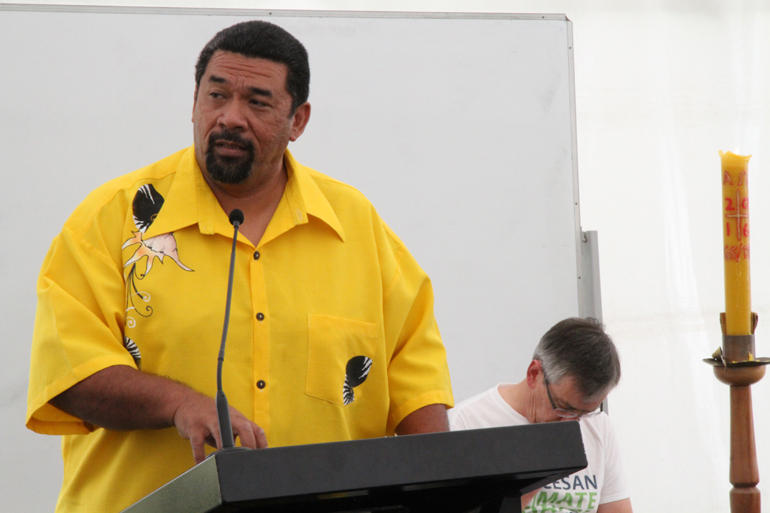A review by climate scientists of aerial & satellite photos of Pacific Islands between 1947 and 2014 shows that five vegetated reef islands have vanished beneath the waves and six additional islands display severe shoreline erosion. Two villages dating from 1935 have been destroyed. Shore recession is greatest for islands with high wave action. These results point to a synergism between rising sea levels and wave action. This is the future for the island nations which are the Diocese of Polynesia, Tikanga Pasifika in the Anglican Church of Aotearoa, New Zealand & Polynesia.
A member of General Synod from Dio Polynesia, Fe’iloakitau Kaho Tevi, enlightened members to more stark reality on the ground, stating seven islands have disappeared just since the Paris climate accords. He attributed the loss to catastrophic cyclones Winston and Pam.
I want to tell you about Cyclones Winston and Pam, that members of this synod lived through, that my family and I lived through. Imagine you are in a train station on the platform, a little way back from the edge of the platform. And a train goes through the station at 250 kph (155 mph). Imagine the force of that wind, the power of it passing by. The sound of that train to you is what Cyclone Pam sounded like. Except its winds reached 341 kph (211 mph). Thank God it was only six minutes of wind, if it had been ten, a lot more lives would have been lost.
Unfortunately much of the outside response to such a disaster is actually unhelpful; 2nd hand high-heeled shoes, used electric appliances to areas without power and food beyond its expiration date, are a few examples of people responding out of sympathy, but without a strategic plan for responding to disasters.
But occasionally the response is extremely helpful, as Fe’i Tevi relates;
A priest from Christchurch – a city that had experienced its own disaster when 185 people died in an earthquake in 2011 – sent a container “filled to the brim with building materials and second hands tools. With that one container we were able to rebuild seven churches and also some vicarages.”
Testimony from folks living the disasters provoked the General Synod to respond. It passed the following motion;
This General Synod / Te Hīnota Whānui 2016 therefore:
Mandates the Anglican Mission Board to work with other relevant service providers of the Church to:
a. Establish a clear resilience strategy that would strengthen the Anglican Church of Aoteraroa New Zealand and Polynesia’s response to any future natural disaster.
b. Develop clear strategies linking the Anglican Church of Aoteraroa New Zealand and Polynesia with disaster relief agencies to enable a cadre of Church Community trainers who are then tasked in training the youth groups of the parishes in disaster preparedness.
c. Develop a Diocesan Rapid Response Plan that would allow the Anglican Church of Aoteraroa New Zealand and Polynesia to respond in a timely and strategic manner to any community affected by a natural disaster in the Pacific Island Countries under its jurisdiction.
d. Link into the Disaster Risk Reduction networks with a view to creating partnerships with other like-minded bodies involved in the area of jurisdiction of the Church.
e. Create a conducive environment for longer term partnerships between parishes in New Zealand and those in the Diocese of Polynesia with the objective of developing longer term twinning parish partnerships on resilience and preparedness.
f. Engage and empower Three-Tikanga young people to be involved at every level of visioning, strategic planning and implementation around building resilience and disaster preparedness.Invites AMB to consider this motion as a priority in its work plan for 2016-2017.
Mandates GSSC to monitor the implementation of this motion in close collaboration with the AMB and other relevant partners and report back on its implementation at the General Synod/te Hīnota Whānui 2018.
The main image and the information for this story are from Anglican Taonga.

